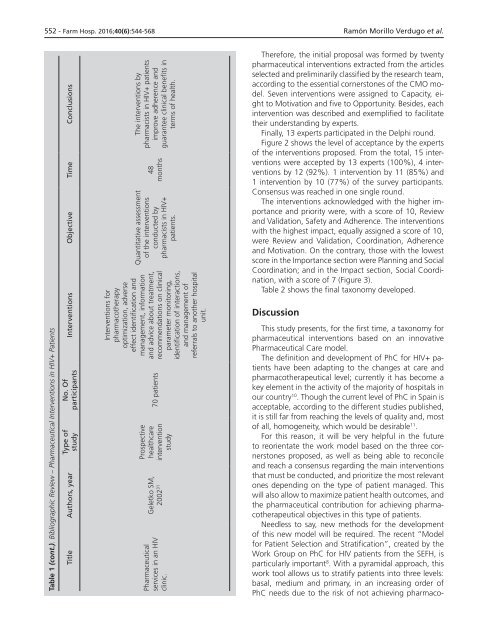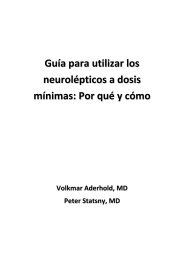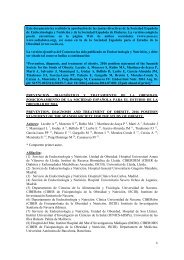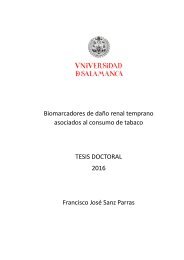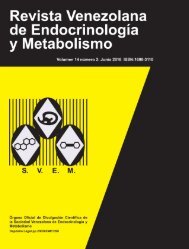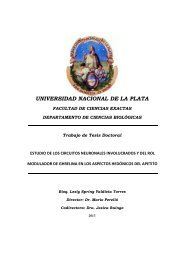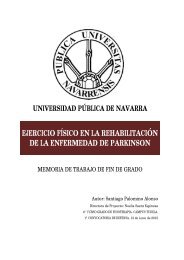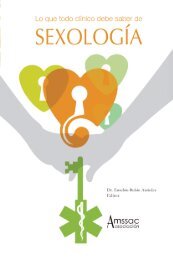Noviembre-Diciembre
156_v40n6(1)
156_v40n6(1)
You also want an ePaper? Increase the reach of your titles
YUMPU automatically turns print PDFs into web optimized ePapers that Google loves.
552 - Farm Hosp. 2016;40(6):544-568 Ramón Morillo Verdugo et al.<br />
Table 1 (cont.). Bibliographic Review – Pharmaceutical Interventions in HIV+ Patients<br />
Interventions Objective Time Conclusions<br />
No. Of<br />
participants<br />
Type of<br />
study<br />
Title Authors, year<br />
The interventions by<br />
pharmacists in HIV+ patients<br />
improve adherence and<br />
guarantee clinical benefits in<br />
terms of health.<br />
48<br />
months<br />
Quantitative assessment<br />
of the interventions<br />
conducted by<br />
pharmacists in HIV+<br />
patients.<br />
Interventions for<br />
pharmacotherapy<br />
optimization, adverse<br />
effect identification and<br />
management, information<br />
and advice about treatment,<br />
recommendations on clinical<br />
parameter monitoring,<br />
identification of interactions,<br />
and management of<br />
referrals to another hospital<br />
unit.<br />
70 patients<br />
Prospective<br />
Geletko SM, healthcare<br />
2002 31 intervention<br />
study<br />
Pharmaceutical<br />
services in an HIV<br />
clinic.<br />
Therefore, the initial proposal was formed by twenty<br />
pharmaceutical interventions extracted from the articles<br />
selected and preliminarily classified by the research team,<br />
according to the essential cornerstones of the CMO model.<br />
Seven interventions were assigned to Capacity, eight<br />
to Motivation and five to Opportunity. Besides, each<br />
intervention was described and exemplified to facilitate<br />
their understanding by experts.<br />
Finally, 13 experts participated in the Delphi round.<br />
Figure 2 shows the level of acceptance by the experts<br />
of the interventions proposed. From the total, 15 interventions<br />
were accepted by 13 experts (100%), 4 interventions<br />
by 12 (92%). 1 intervention by 11 (85%) and<br />
1 intervention by 10 (77%) of the survey participants.<br />
Consensus was reached in one single round.<br />
The interventions acknowledged with the higher importance<br />
and priority were, with a score of 10, Review<br />
and Validation, Safety and Adherence. The interventions<br />
with the highest impact, equally assigned a score of 10,<br />
were Review and Validation, Coordination, Adherence<br />
and Motivation. On the contrary, those with the lowest<br />
score in the Importance section were Planning and Social<br />
Coordination; and in the Impact section, Social Coordination,<br />
with a score of 7 (Figure 3).<br />
Table 2 shows the final taxonomy developed.<br />
Discussion<br />
This study presents, for the first time, a taxonomy for<br />
pharmaceutical interventions based on an innovative<br />
Pharmaceutical Care model.<br />
The definition and development of PhC for HIV+ patients<br />
have been adapting to the changes at care and<br />
pharmacotherapeutical level; currently it has become a<br />
key element in the activity of the majority of hospitals in<br />
our country 10 . Though the current level of PhC in Spain is<br />
acceptable, according to the different studies published,<br />
it is still far from reaching the levels of quality and, most<br />
of all, homogeneity, which would be desirable 11 .<br />
For this reason, it will be very helpful in the future<br />
to reorientate the work model based on the three cornerstones<br />
proposed, as well as being able to reconcile<br />
and reach a consensus regarding the main interventions<br />
that must be conducted, and prioritize the most relevant<br />
ones depending on the type of patient managed. This<br />
will also allow to maximize patient health outcomes, and<br />
the pharmaceutical contribution for achieving pharmacotherapeutical<br />
objectives in this type of patients.<br />
Needless to say, new methods for the development<br />
of this new model will be required. The recent “Model<br />
for Patient Selection and Stratification”, created by the<br />
Work Group on PhC for HIV patients from the SEFH, is<br />
particularly important 8 . With a pyramidal approach, this<br />
work tool allows us to stratify patients into three levels:<br />
basal, medium and primary, in an increasing order of<br />
PhC needs due to the risk of not achieving pharmaco-


